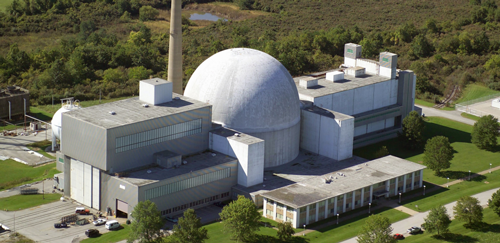By Anupum Pant
In the past we’ve seen sound systems that used plasma instead of magnets to produce sound. Well, those plasma sound systems were pretty well equipped to kill you, but they would do it in a different manner – by electrocuting you. This one we are talking about today, literally kills you with sound.
LEAF
European Space Agency uses an extra-large speaker that throws extra-big sound at test objects. It is known to recreate the sound that a launcher produces while taking off and travelling through atmosphere. This speaker, known as, the Large European Acoustic Facility (LEAF) in Netherlands, is used by the European Space Agency to test satellite parts.
The Glory: They say that if any person listens to sound playing on this speaker, he/she won’t survive. This is the reason, the most powerful sound system in Europe, is enclosed in a facility that has walls that 17 meters in height, are half a meter thick and are overlaid with a resin on the inner walls that reflects sound & does not let it escape. Also, it has a safety mechanism that doesn’t allow anyone to power it on, if the doors are not shut properly.
Nitrogen is pumped in great amounts through the huge ear-canal-like thing which enables it to produce sounds up to 154 decibel! If you are wondering how loud 154 decibel is, you should check this out – How Loud Can it Get. In short, it is loud enough to rupture your eardrums and probably kill you too.
I came across this equipment first at [PopSci]
More information at [ESA]
So I wondered, if this is the most powerful sound system in Europe, are there more powerful ones elsewhere in the world?
Duh! Yeah. And as expected, it is in USA.
Reverberant Acoustic Test Facility (RATF)
 The Orion Integrated Environmental Testing at the NASA Space Power Facility (SPF), a huge facility which looks pretty much like a nuclear power plant from afar, houses several other testing facilities, and the world’s largest space environment simulation chamber, also has the worlds most powerful sound system – The Reverberant Acoustic Test Facility. [Image]
The Orion Integrated Environmental Testing at the NASA Space Power Facility (SPF), a huge facility which looks pretty much like a nuclear power plant from afar, houses several other testing facilities, and the world’s largest space environment simulation chamber, also has the worlds most powerful sound system – The Reverberant Acoustic Test Facility. [Image]
The horns that produce sound here, are also powered by Nitrogen and there are 36 of them. It is able to produce a total sound pressure of 163 dB, which is a lot more than what LEAF can produce (because dB scale is not linear) – About seven times more powerful than standing next to a jet engine or a Formula 1 race car. In here, it is far too easy to kill a full grown man.


